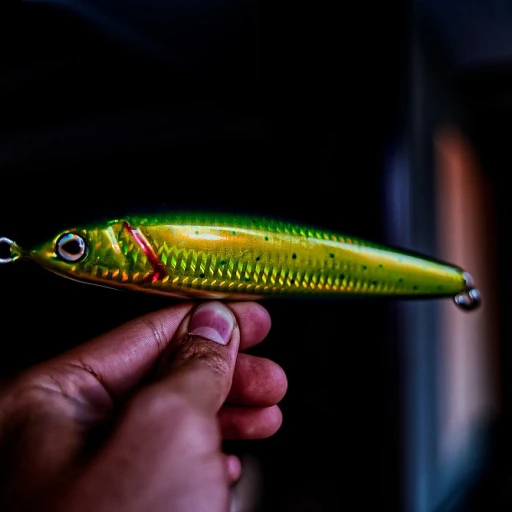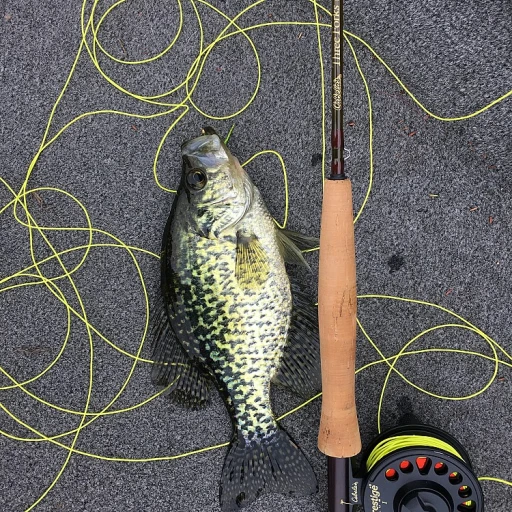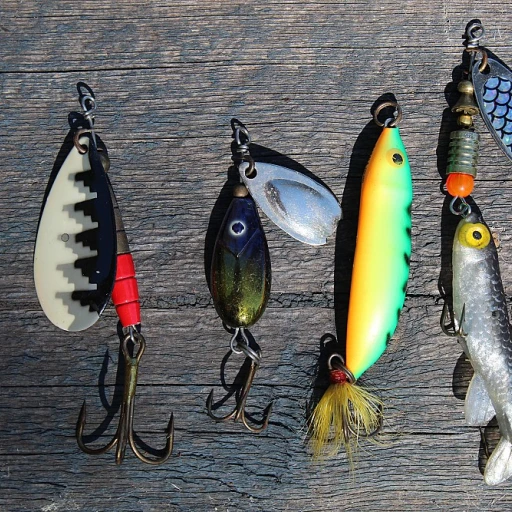
Understanding Spreader Bars
The Role of Spreader Bars in Fishing
Spreader bars have become an indispensable tool for recreational anglers looking to maximize their catch, especially when targeting species like tuna and marlin. These heavy-duty bars are not to be mistaken for standard fishing equipment; they serve a unique purpose in material handling within fishing operations. The key function of a spreader bar is to distribute a wide array of lures at varying distances, simulating a school of fish. This technique enhances your fishing setup by creating a lifelike presentation that attracts large predators. The bar itself acts as a sturdy framework to which multiple lures can be attached, ensuring that your fishing line maintains an ideal lift and keeps your setup organized. Constructed with materials like stainless steel and adjustable elements, spreader bars are designed for durability while withstanding the corrosive marine environment. Their robust construction makes them suitable for handling heavy loads which is often necessary in high-stakes fishing scenarios. Especially when faced with lifting the excitement of a potential big catch, understanding the capabilities and specifications of your chosen spreader bar will serve you well in lifting operations. For those new to utilizing spreader bars in their fishing repertoire, continual training and gaining experience are essential. Understanding the load capacity, adjustable features, and the integration of equipment like wire rope or chain slings can significantly enhance your overall fishing experience. With practice, you’ll be able to select the right combination of straps and slings to optimize your load for success. Moreover, for enthusiasts interested in blending traditional methods with newer techniques, mastering the art of other fishing gear, such as planer boards, could further enrich your fishing adventures. Explore more about planer boards to see how they complement the use of spreader bars. Utilizing both tools efficiently will provide a comprehensive approach to advancing your recreational fishing endeavors.Benefits of Using Spreader Bars
Advantages of Implementing Spreader Bars in Fishing
When it comes to taking your fishing adventures to the next level, incorporating spreader bars into your setup can offer notable advantages. These versatile tools are a boon for recreational fishermen looking to enhance their fishing experience, particularly when targeting species such as tuna and marlin.
One of the primary benefits of using spreader bars is their ability to mimic a school of small fish, which naturally attracts larger fish. By simulating the appearance of prey, they significantly increase the likelihood of a successful catch. Spreader bars are essential pieces of material handling equipment that distribute weight evenly, making them fully capable of holding heavy-duty lines and lures. This capacity makes them invaluable during fishing operations that involve dealing with substantial loads.
Additionally, the use of spreader bars can contribute to more effective trolling techniques by stabilizing lines and preventing tangles. With the right setup, they keep your baits at the ideal lifting points and depth, optimizing your chances of a rewarding catch.
For anglers who are concerned about maintenance and longevity, stainless steel spreader bars are an excellent choice due to their resilience against corrosion from saltwater. Furthermore, some models come with adjustable bars and straps, adding versatility to accommodate different water conditions and fishing strategies.
In the competitive fishing business, having reliable gear can make all the difference in lifting your game. Through strategic attachment of rope slings and chain slings, these bars spreader dynamics can be precisely utilized to suit your specific needs. Training on the optimal use of lifting equipment like spreader bars can help maximize performance, justifying their price as a valuable investment.
To discover more about enhancing your fishing setup, check out trolling lures and other innovative techniques that can work in tandem with spreader bars.
Choosing the Right Spreader Bars for Your Needs
Factors to Consider When Selecting Your Spreader Bar
Choosing the right spreader bar can significantly enhance your fishing experience, especially when targeting big game such as tuna and marlin. Here are crucial factors to consider when selecting a spreader bar suited to your needs:
- Material and Construction: Look for bars crafted from stainless steel as they offer superior durability and resistance to corrosion. This is essential for handling heavy loads and withstanding harsh marine environments.
- Adjustability: An adjustable spreader can adapt to various fishing conditions, making the equipment versatile across different fishing styles and locations. These bars come equipped with lifting points and adjustable straps or slings to accommodate different loads.
- Load Capacity: Determine the weight capacity your equipment needs to handle. Heavy-duty spreader bars are tailored to manage substantial loads, crucial when targeting bigger fish. Consider your average catch size and choose a product that aligns with those requirements.
- Price Range: While stainless steel and heavy-duty bars might come at a premium price, investing in quality equipment ensures safety and longevity. Identify your budget but remember that in business, quality can save costs in the long run by reducing replacement needs.
- Durability and Maintenance: Regular care and maintenance of your bar spreader can prolong its life. Learn more about enhancing your fishing experience by investing in durable material handling tools suited for fishing.
By evaluating these factors, you can make an informed decision that fits your fishing style and improves your catch efficiency. This will elevate your fishing operations and ensure that your lifting equipment performs effectively out at sea.
Techniques for Effective Use of Spreader Bars
Making the Most of Your Spreader Bar Setup
Using spreader bars effectively can significantly enhance your fishing experience, especially when targeting species like tuna and marlin. Here are some techniques that can help you maximize your setup:- Ideal Lifting Configuration: Before hitting the water, ensure your spreader bars are properly configured for the conditions you'll face. This might include adjusting the weight and positioning of the bars to accommodate heavy loads or specific fishing environments, ensuring your lifting equipment functions as desired.
- Selecting the Right Lures: Pair your spreader bars with the right lures to attract your target fish. Consider the size and movement of the lures and how they align with the adjustable spreader's action in the water.
- Optimizing Lifting Points: Carefully choose lifting points to maintain balance and control. This is crucial when dealing with heavy duty setups and ensuring your materials handle the stress without damage. Use appropriate wire rope and rope slings for stability.
- Adjusting for Conditions: Weather and water conditions can affect how your spreader bars operate. Be prepared to make real-time adjustments to the adjustable spreaders on your rig, modifying the equipment to suit winds or currents that might influence the fishing load.
- Practicing Safe Lifting Operations: Always be mindful of safety when using lifting equipment like spreader bars. Conduct routine checks to ensure all chain slings, slings lifting, and supporting elements are in good condition and capable of handling the load.
Maintenance and Care for Spreader Bars
Keeping Your Spreader Bars in Top Condition
Proper maintenance and care play a crucial role in ensuring the longevity and optimal performance of your spreader bars. Regular attention not only helps preserve the equipment but also safeguards against potential mishaps during lifting operations.- Inspection Routine: Begin by inspecting your spreader bars after each use. Look for signs of wear, corrosion, or deformation. Since these bars often bear heavy loads, any damage can compromise their integrity and performance.
- Cleaning and Lubrication: Saltwater and other environmental elements can be harsh on materials. Use freshwater to rinse off your spreader bars after each fishing trip. If your equipment is made of stainless steel, it's resistant to rust but may still require occasional lubrication to ensure smooth operation.
- Check Fastenings and Adjustable Features: Spreader bars often come with adjustable components and lifting points that need close monitoring. Ensure that bolts, straps, and wire ropes are securely fastened. Loose or worn parts should be replaced immediately to avoid accidental load drops.
- Storage Tips: Store your spreader bars in a cool, dry place when not in use. Avoid placing them in areas prone to moisture to prevent rust and corrosion. Hanging them with suitable slings or placing them on non-abrasive surfaces can help minimize potential damage.
- Professional Evaluation: Even though regular personal checks are important, you should also consider a professional evaluation of your equipment at least once a year. This can help identify any underlying issues that may go unnoticed.
Common Mistakes and How to Avoid Them
Common Pitfalls in Using Spreader Bars
When it comes to utilizing spreader bars in your fishing adventures, there are a few common mistakes that can hinder your success. Understanding these pitfalls can help you avoid them and enhance your fishing experience.
Incorrect Setup and Adjustment
One of the most frequent errors is improper setup and adjustment of the spreader bar. Ensuring that your bars are correctly aligned and adjusted to the right length is crucial. Adjustable spreaders offer flexibility, but failing to secure them properly can lead to ineffective performance or even damage. Always double-check the alignment and secure all straps and slings before heading out.
Overloading the Equipment
Another common mistake is overloading the spreader bars beyond their capacity. Each bar has a specific load limit, and exceeding this can lead to equipment failure. It's essential to understand the weight of your catch, especially when targeting heavy species like tuna or marlin, and ensure your spreader bar is rated for such loads. Opt for heavy-duty or stainless steel options if you frequently deal with heavy loads.
Neglecting Maintenance
Regular maintenance is often overlooked, leading to premature wear and tear. After each use, inspect your spreader bars for any signs of damage or corrosion, particularly if they're made of stainless steel. Proper care, including cleaning and storing them in a dry place, will prolong their lifespan and maintain their effectiveness.
Ignoring Training and Safety
Finally, neglecting proper training and safety measures can result in accidents or equipment damage. Familiarize yourself with the correct techniques for using spreader bars and ensure all lifting operations are conducted safely. This includes understanding how to use wire rope, chain slings, and other lifting equipment effectively.
By being aware of these common mistakes and taking proactive steps to avoid them, you can ensure your spreader bars remain a valuable asset in your fishing toolkit.













